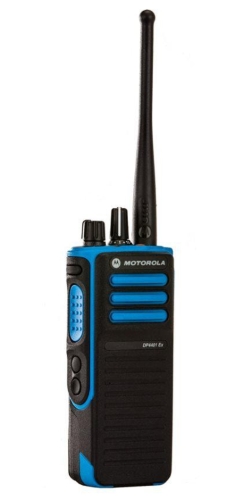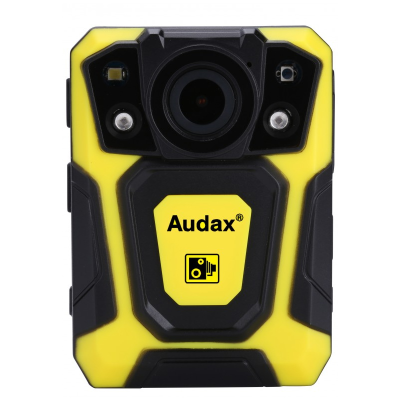A Guide to Long-Range Radios
 11th Jul 2024
11th Jul 2024

 Released On 27th Aug 2024
Released On 27th Aug 2024
Do your employees work alone, with the public, in high-risk environments or outside of standard working hours? Ensuring their safety and well-being is a priority – and often a significant challenge.
We’re looking at a range of communication technologies, including two-way radios, PoC (Push-to-Talk over Cellular) devices, and body-worn cameras, to help organisations meet their health and safety obligations. All of these come equipped with various safety features that can help to achieve a lower level of risk.
Two-way radios have benefited from safety features for many years, particularly professional-grade digital radios. For instance, the Hytera HP685G digital handset with Bluetooth benefits from a whole suite of advanced safety features designed to protect workers.
Even entry-level radios sometimes incorporate basic safety elements. A good example is the Motorola TLKR T92 H2O Twin-Pack, a cost-effective, licence-free radio that includes an emergency alert button, making it an accessible option for those seeking essential safety functionality.
Push-to-talk over cellular (PoC) technology is increasingly popular and uses the 4G/5G LTE cellular network or Wi-Fi to connect individuals or groups of users. Some PoC devices resemble a smartphone, for example the Hytera PNC460, while others, such as the Hytera PNC380D or Hytera MNC360, maintain the traditional look of handheld or mobile radios.
Because traditional two-way radios and PoC devices often share similar functionalities, they also typically share many of the same safety functions.
 Many radios and PoC devices come with a variety of safety features, each designed to address specific risks. Below is a detailed explanation of these features. Every model is different, and your budget may influence which features are available. However, not all features will be relevant to every worker’s needs.
Many radios and PoC devices come with a variety of safety features, each designed to address specific risks. Below is a detailed explanation of these features. Every model is different, and your budget may influence which features are available. However, not all features will be relevant to every worker’s needs.
If in doubt, our helpful Radio Geeks can guide you to the most suitable equipment.
Click to jump to each feature:
As the name suggests, pressing an emergency alert (or panic) button triggers a call for assistance across the entire radio network. The alert can take various forms, including text message, tone, voice alert or screen identification. Depending on your radio, some emergency alert buttons can be programmed to raise an alarm to a base station or other radios. If the receiving device has a screen, the alarm may also identify the person raising the alarm.
This feature can offer reassurance and critical assistance to lone workers, helping to reduce response times.
The Man-Down feature detects when a user is in a horizontal position, has fallen, or if the radio remains tilted on its side for longer than a preset period. In these scenarios a tilt-switch triggers an alarm.
The device may also send an alert if the user is motionless or exhibits very limited movement. This feature is particularly valuable for lone workers in hazardous environments, such as those working at height or operating dangerous machinery.
The alarm will alert other users or the control centre, enabling them to dispatch assistance. Man-Down functions can help locate the worker via an audio beacon or GPS (if installed), and may even allow other users to hear what is happening in the worker’s surroundings by activating an open mic (see Remote Monitoring below).
The user receives a warning signal before the alarm is activated, allowing them to respond and prevent false alarms.
The lone worker function uses a timer to monitor inactivity. If the worker remains inactive for a pre-programmed period, the radio issues a warning or audible alert, prompting the worker to respond by pressing the push-to-talk (PTT) button. Failure to respond within the set time triggers the radio to enter emergency mode, sending an alarm to a supervisor or another designated individual who can monitor the situation. GPS tracking, if available on the model, can assist in locating the worker.
A device’s programming or dispatcher software is typically activated through the lone worker function, with the option to adjust settings based on the day of the week or public holidays.
Radios, PoC devices and body cameras with integrated GPS location tracking can instantly identify a lone worker’s location data, adding a layer of security and ensuring a rapid emergency response.
GPS tracking can be integrated with geofencing technology to create virtual boundaries. If a worker crosses these boundaries, an alert can be triggered, informing supervisors that the worker is entering or leaving specific zones, such as dangerous areas or secure locations.
In an emergency, it’s crucial that a dispatcher can quickly convey important information to everyone on the radio network. Priority Interrupt, as the name suggests, interrupts existing calls on a channel, freeing it up for emergency notifications or higher priority instructions.
The remote monitoring feature in a radio system allows one radio user to remotely activate and listen to another radio without the other user's manual activation. This feature is typically used in emergencies, enabling the monitoring radio to receive audio from the monitored radio's environment. It’s particularly useful if the user is in danger or unable to operate the radio themselves.
The "Lost Connection" feature on two-way radios alerts users when their radio has lost communication with other radios or the network. This is particularly useful in situations where continuous communication is critical, such as in public safety, military operations, or industrial environments.
The radio constantly monitors its connection to other radios or the network. If it detects a lost connection — due to moving out of range, a failure in the communication system, or strong interference — the feature will trigger an alert to the user.
This ensures the user is immediately aware of any communication issues and can take corrective action. This might mean moving to a location with better signal strength, switching channels, or troubleshooting the equipment.
 In hazardous environments, such as oil rigs, mines, or refineries, where a spark from an electrical device could trigger an explosion, radios must meet higher safety standards.
In hazardous environments, such as oil rigs, mines, or refineries, where a spark from an electrical device could trigger an explosion, radios must meet higher safety standards.
Intrinsically safe radios (also called ATEX radios), such as the Motorola DP4401 EX or the Hytera 795 EX, are designed to limit the heat they produce and eliminate any risk of generating even the tiniest spark. This isn't a one-off feature but an fundamental part of how the device is designed and built.
For more information about this, you can refer to our article about intrinsically safe radios.
Wearable security solutions such as body cameras are vital safety tools for workers in law enforcement, security, healthcare, transport or retail.
 They incorporate advanced safety features, for example integrated GPS and an integrated SOS button in the Audax 20-1 body worn camera gives the user’s exact location and lone worker protection. Many body-cameras offer live-streamed footage, enabling real-time situational assessment and back-up support by control centres.
They incorporate advanced safety features, for example integrated GPS and an integrated SOS button in the Audax 20-1 body worn camera gives the user’s exact location and lone worker protection. Many body-cameras offer live-streamed footage, enabling real-time situational assessment and back-up support by control centres.
As with radios and PoC technology, sophisticated features are usually more extensive at the mid-to-upper budget range.
Aside from their physical safety features, however, possibly the most significant benefit of body cams is the psychological deterrent effect that live-stream video recording and potential witness footage can, discouraging anyone from using threatening or aggressive behaviour.
Every organisation has different needs, and your duty-of-care obligations don’t always require top-of-the-range equipment to get the most beneficial features for your workers. Confused? Ask our experts for advice – it’s free, friendly and we promise, no jargon!
Talk with us now online, by phone, form or email.
 11th Jul 2024
11th Jul 2024
 25th Apr 2023
25th Apr 2023
Stay up to date with the latest from RadioTrader